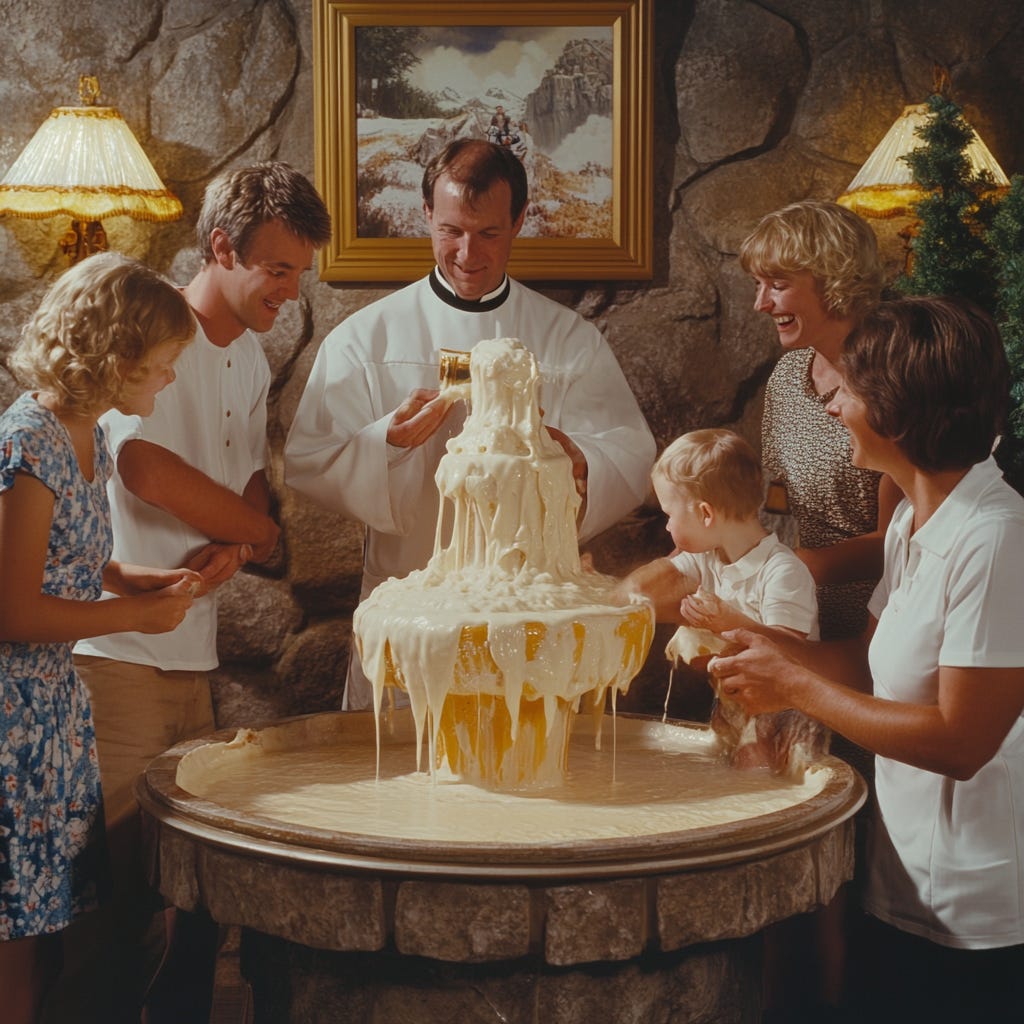🌶️Hot sauce king🌶️
David Tran's story
David Tran loves spicy chili sauce so much that white people are buying it.
Tran first peddled chili sauce on the streets of Ho Chi Minh City after the American War. But under the new government, business was difficult, especially for ethnic Chinese minorities like Tran.
With an uncertain future at home, Tran joined a mass of refugees leaving Vietnam, arriving in Los Angeles in early 1980. Within a month, he launched Huy Fong Foods (named after the refugee ship he took out of Vietnam) and was selling a chili sauce he called Sriracha (loosely based on a hot sauce originating from Sri Racha, Thailand).
But America isn’t a hot sauce hotbed. There’s Tabasco and the Southern border can get spicy, but its heart is sweet and creamy. It’s a ketchup town, a mayo metropolis from sea to shining sea, and it was even more so in the 80s.
Bottled ranch dressing was introduced in the mid-80s and by the early 90s it was the top-selling dressing as it evolved from a salad topping to an everything condiment. Americans embraced it as a de facto Christ figure—it ruled over every aspect of their diet. In times of drought, rural Wisconsin families baptized children in it.
If you wanted to plant the seeds of an American business empire, hot sauce wasn’t an obvious first choice. But Tran wasn’t interested in empire-building. “My American dream was never to become a billionaire,” Tran told the LA Times in 2013. “We started this because we like fresh, spicy chili sauce.”
The anti-mayo
Tran set up shop outside of LA’s Chinatown and sold directly to Asian restaurants and markets. He made a hot sauce he liked and could sell to other Vietnamese and Chinese immigrants.
Bottle by bottle, Sriracha became a fixture in Asian-American communities. You’ll be hard-pressed to find a pho restaurant in America that doesn’t have Huy Fong Sriracha on every table, and it’s a popular ingredient in spicy tuna rolls.
In the early days, friends and suppliers suggested changes to boost Sriracha sales. It’s too spicy. Add a tomato base. Make it sweeter. Tran stood firm. “Hot sauce must be hot…We don’t make mayonnaise here,” he said.
With Tran’s middle finger raised proudly in the face of weak sauces, Sriracha had an identity people could latch onto.
This powered the company’s growth through word of mouth, and in 45 years Tran has never advertised. When you buy Huy Fong Sriracha, you’re paying for hot sauce—not billboards or celebrity endorsements.
Sriracha-fication of everything
A flavor doesn’t matter until it’s been condensed into a powder and blasted on a potato chip.
Sriracha matters.
It’s not just on potato chips. There have been Sriracha Doritos, Sriracha nuts, Sriracha Cheez-It snack mix, Sriracha pretzels, and Sriracha popcorn. You can find it in artisanal ice cream, beer, and chocolate.
Sriracha’s reach is so wide, it’s become a sauce within a sauce. It’s been added to ketchup, mayo, mustard, and—you guessed it—ranch dressing (ending ranch baptisms).
Few Sriracha-ified goods are officially sanctioned by Huy Fong Foods. It only makes three types of chili sauce and has a handful of partnerships for other products. Most of this Sriracha craze is driven by competitors because the name Sriracha isn’t trademarked.
Only the green-capped bottle and rooster logo are protected. It’s unclear whether Tran could have trademarked the name Sriracha, but it doesn’t matter. He considers competitors free advertising.
Another benefit of more Sriracha on the shelves is more people can enjoy it. “I know that I cannot make enough of my product to meet the demand, so let them have it and work together for the consumer,” Tran told Bloomberg.
Tran loves Sriracha
Huy Fong Sriracha isn’t the best-selling hot sauce in America (yet), but it may be the most loved. There are festivals, songs, fan art, deep dives on YouTube, and an award-winning documentary. Lexus made a promotional Sriracha version of its 2017 IS sports sedan. Devout followers cover their Sriracha-tattooed calves with Sriracha socks before resting them on plush Sriracha pillows. During shortages, it can sell for 5X the sticker price on eBay.
Huy Fong Foods is valued at over a billion dollars, and long ago reached the exit point for most founders.
Tran could be cruising the world in a chili-pepper-shaped mega yacht. He’s received multiple offers to buy Huy Fong Foods but has no plans to sell. “This company—she is like a loved one to me, like family,” he said. He plans to pass it on to his children, who work with him.
It’s easy to be overprotective with your creation, especially as a refugee who already gave up so much. But Tran embraced the Sriracha copycats, which seems to have helped business.
He could have hired Ricky Martin to squirt Sriracha on his chest while encouraging viewers to live la vida loca, or hired Ogilvy to organize a PR blitz on the health benefits of replacing Hellman’s Mayonnaise with Huy Fong Sriracha (get the Hell out of my sandwich).
Why would he need that? If you love something, it’s easy to envision other people loving it too. And other people really love Huy Fong Sriracha.
The oddest thing about David Tran is that he sells $150 million in hot sauce a year because selling hot sauce isn’t what he loves the most.
Sources
An oral history of David Tran, UC Irvine Southeast Asian Archive
Sriracha - documentary short
The Best Idea Yet podcast - “Sriracha: From Smuggled Gold to Hot Sauce Billions”
Sriracha hot sauce purveyor turns up the heat
The Great Sriracha Battle Is Coming to America
The highly unusual company behind Sriracha, the world’s coolest hot sauce
What really caused the sriracha shortage?
How Did The Sriracha Shortage Happen?
Sriracha: Track the incredible journey of a red hot sauce
Ranch baptism photo courtesy of Midjourney (also ranch baptisms aren’t real)



